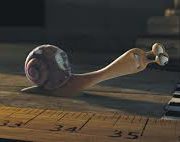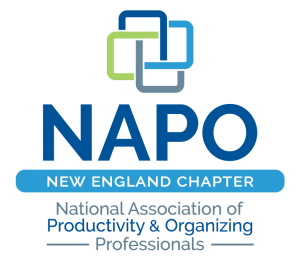Reaching the Finish Line
 During my class on Conquering Clutter With Confidence we discuss reaching the finish line. In order to do this, we first discuss what it means to reach the finish line. It means doing things from start to finish, and knowing when that finish line has been crossed. For example, in my house, the finish line has been crossed, while doing dishes, when there are no dirty dishes left unwashed, and the sink and counters have been wiped clean. In your family, when is the finish line crossed while doing dishes? What about the laundry? When is it reached with new purchases or gifts that have been received? Where does the receipt go, and what do you do with the box? What happens to the gift bag, tag, and tissue paper? Establishing when the finish line has been crossed will help reduce clutter.
During my class on Conquering Clutter With Confidence we discuss reaching the finish line. In order to do this, we first discuss what it means to reach the finish line. It means doing things from start to finish, and knowing when that finish line has been crossed. For example, in my house, the finish line has been crossed, while doing dishes, when there are no dirty dishes left unwashed, and the sink and counters have been wiped clean. In your family, when is the finish line crossed while doing dishes? What about the laundry? When is it reached with new purchases or gifts that have been received? Where does the receipt go, and what do you do with the box? What happens to the gift bag, tag, and tissue paper? Establishing when the finish line has been crossed will help reduce clutter.
Reaching the finish line also means completing the organizing process and reclaiming order. Putting things away and picking up after ourselves are important parts of reaching the finish line. It is what helps us maintain order, and is best accomplished with practice. For example, upon returning home after being out, I spend time putting things away. My keys and coat go on their hooks, my shoes go on the mat, and my pocketbook goes on the desk. Practicing reaching the finish line with this daily organizing routine helps me maintain order. Other daily organizing routines that can benefit from practice are dressing for the day, processing the mail, undressing at night, project clean up, and picking up toys.
In your home, do you want to reduce clutter and maintain order? You can by reaching the finish line. What finish line is waiting for you to cross it? Will you know when you’ve crossed it? Also, take a closer look at your daily organizing routines. Can you improve them with practice? If you think you’d be more successful with a little help from me, please ask.
©December 2017 Janine Cavanaugh, Certified Professional Organizer® All Rights Reserved




















 Situational disorganization is when our organizational systems are temporarily derailed, or when we’re temporarily overwhelmed by life. A few examples are when one has to downsize in less than 3 months, when one has to clean out the family home to prepare for a sale, or when one inherits a mass quantity of things all at once. In these situations I’d recommend asking for help from a Professional Organizer.
Situational disorganization is when our organizational systems are temporarily derailed, or when we’re temporarily overwhelmed by life. A few examples are when one has to downsize in less than 3 months, when one has to clean out the family home to prepare for a sale, or when one inherits a mass quantity of things all at once. In these situations I’d recommend asking for help from a Professional Organizer.






Follow Me